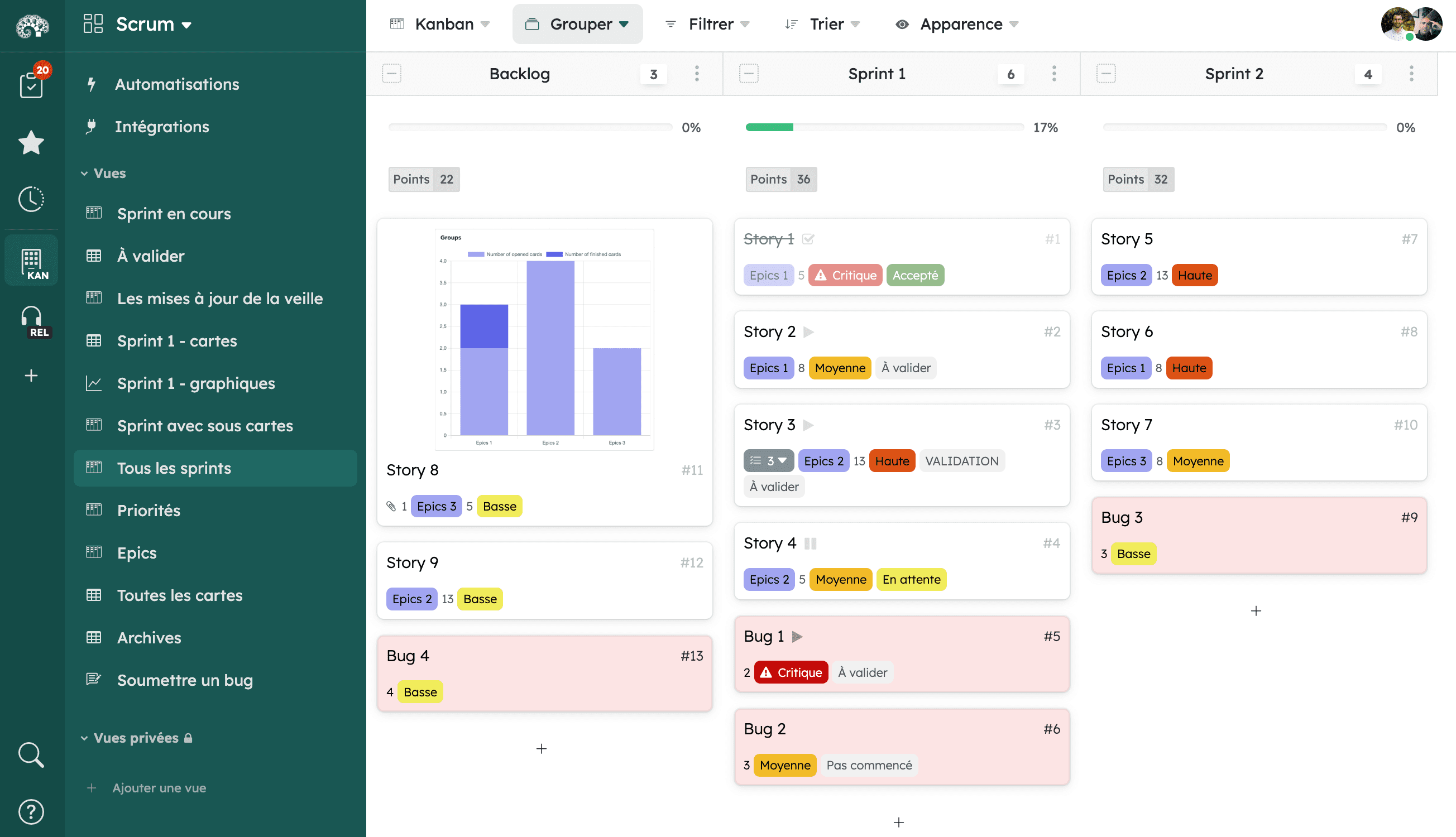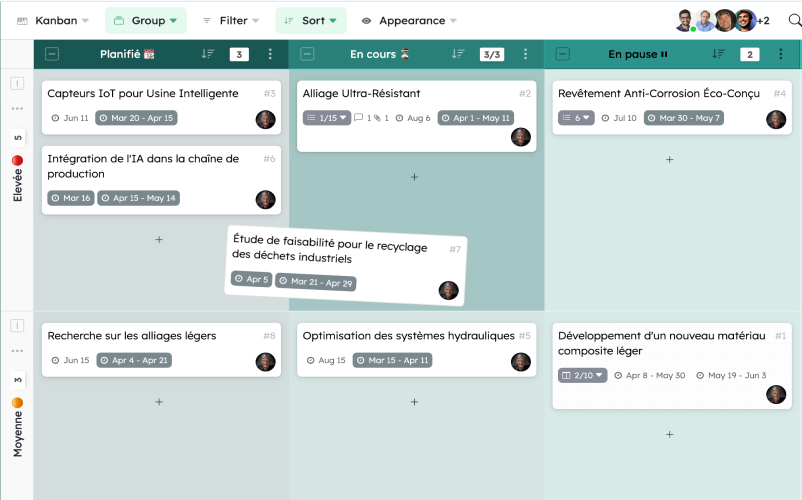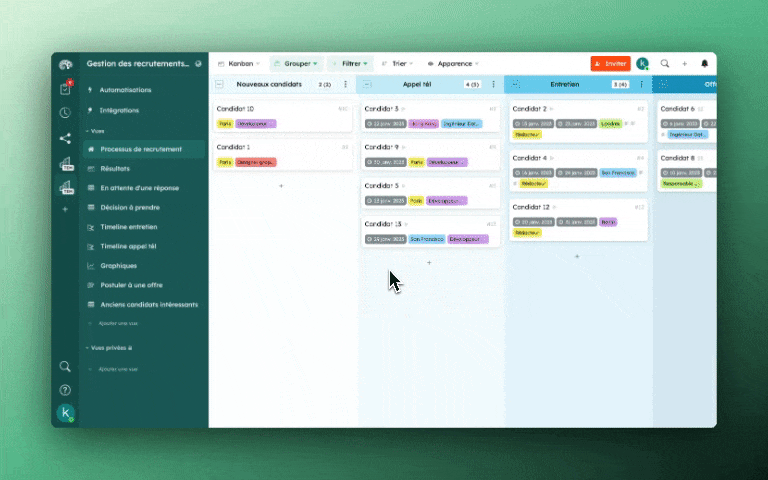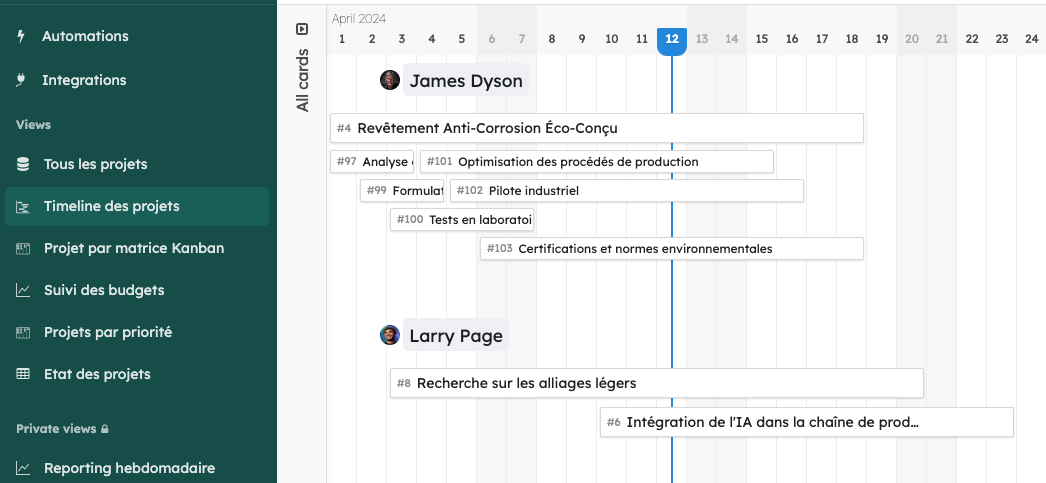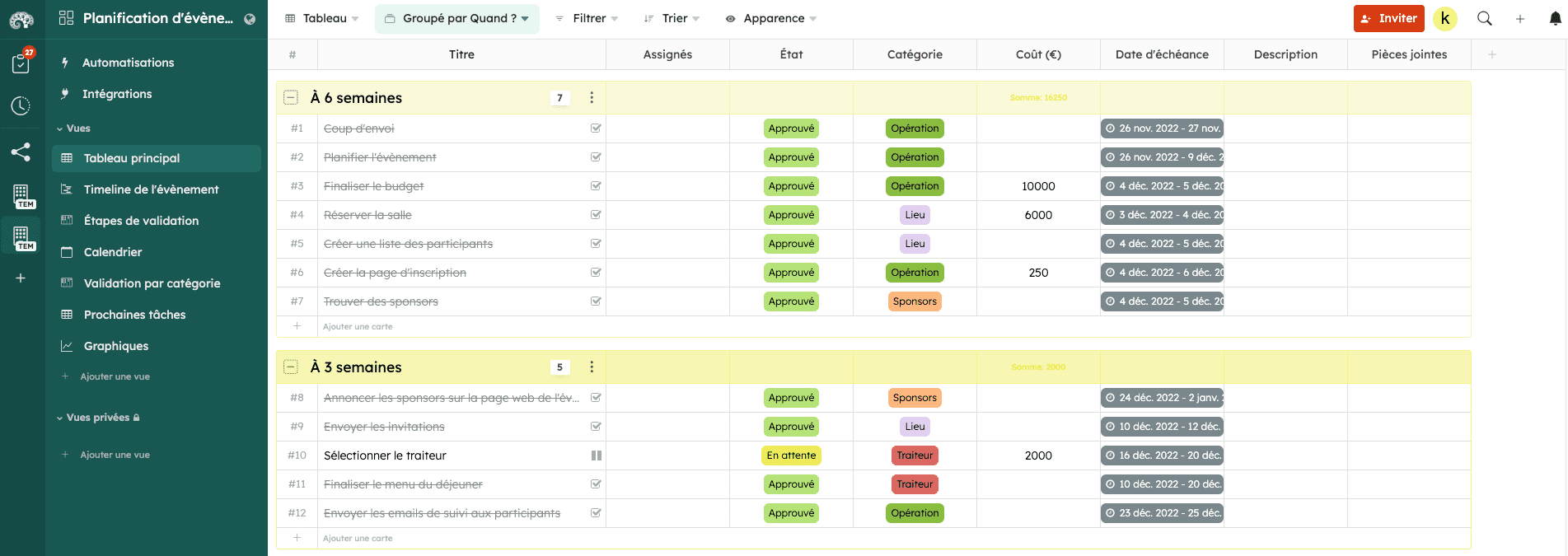How does Kantree adapt to different project methodologies?

In the world of project management, there are various methodologies to consider. To name just a few: scrum, kanban, Scrumban, Workflow, Waterfall, and hybrid. When choosing a project management tool suited to your method, it’s easy to get lost in the options.
You might then ask yourself: Is this project management tool right for my way of working? Can workflows be managed individually and in groups? Will it adapt to different agile vs scrum project methodologies?
Imagine this scenario: You’re using a tool that suits you well because it allows you to work in scrum. Your colleagues from another department need to communicate with you, but they work in waterfall.
Problem: How can the two teams work well together?
Instead of piling on layers of software and automating between them, is there a tool that supports different methodologies?
Look no further, you’re in the right place.
We’ve summarized in this article the main different methodologies with use cases to help you understand and finally, how Kantree is the only tool that lets you combine them all:
- The Scrum Method
- The Kanban Method
- The Scrumban Method
- The Waterfall Method
- The Hybrid Method
- Conclusion
1) Scrum: The quintessential agile method
What is Scrum?
Scrum is an Agile project management method that emphasizes short iterations called “sprints.” Each sprint delivers a functional product increment, with a focus on continuous improvement through regular feedback loops. The key roles in a scrum team are the Product Owner, Scrum Master, and the development team.
 Representation of the Scrum methodology.
Representation of the Scrum methodology.
Advantages of the Scrum methodology:
- Adaptability: Scrum allows priorities and deliverables to be adjusted almost on the fly during sprints.
- Transparency: Thanks to ceremonies, i.e., the events that drive the methodology (Daily 15-minute standups, Sprint Planning meetings, etc.), the team and stakeholders have a clear view of progress.
- Quick feedback: Frequent deliveries enable rapid feedback and adjustments accordingly.
Disadvantages of the Scrum method:
- Team dependency: Scrum relies on highly autonomous and engaged teams. If your team doesn’t fit this mold, it can be difficult to implement or ineffective.
- Complexity for long projects: For very complex or long projects, it may be hard to maintain the sprint cadence.
Common use case:
Scrum is widely used by product development teams, particularly in IT, where adaptability and speed are essential.
How does it work in Kantree?
Kantree helps structure sprints, automate repetitive task management, and track team progress in real-time. Here’s how we recommend setting it up:
- Use the Kanban view to visualize all workflow stages.
- A Label field to define statuses and identify Sprints, Epics.
- Card types to manage different structures: bugs, user stories, tasks.
- Sub-cards to handle tasks.
- A Number field to assign points (effort) to tasks.
- Filtered and grouped views to visualize cards by Sprints, Epics, or priority.
- The Journal view during your daily standups to ensure no detail is missed.
- The Dashboard view to identify issues in advance and improve your workflow by configuring indicators (velocity, burndown chart).
- A form to allow external contributors to submit cards.
- Meeting cards to record retrospective meetings.
- The Portfolio space to create views and indicators by cross-referencing cards from multiple workspaces.
To get started with the Scrum model, it’s easy. We’ve created a dedicated template for you. Click the image to start modifying it 👇
2) Kanban: Visual flow management
What is Kanban?
Kanban is a method based on visualizing tasks through columns representing different stages of a process. Teams add, move, and complete tasks fluidly without imposed sprints or fixed deadlines.
Advantages of the Kanban board:
- Flexibility: Unlike Scrum, there are no fixed delivery periods. Work progresses at a fluid pace.
- Visualization: Kanban offers immediate visibility into the status of ongoing tasks.
- Work in progress (WIP) limitation: This helps prevent work overload.
Disadvantages:
- No strict temporal structure: This can make progress tracking difficult without clear objectives.
- Dependence on self-management: Teams must be able to self-organize, which can be challenging without strong leadership.
Common use case:
Kanban is particularly suited to teams managing a continuous flow of tasks, like customer support or machine maintenance.
How does it work in Kantree?
With Kantree, you can easily create custom Kanban boards, track ongoing tasks, and automate notifications to ensure nothing falls through the cracks. We recommend using:
- The Kanban view to visualize all workflow stages.
- Card types to manage different elements within the same workspace: bugs, user stories, tasks, meetings.
- Creating a relationship field on meeting cards to link topics to be discussed.
- A Label field to define workflow stages.
- Displaying a card limit in each column via the Customize Style menu to avoid overloading any step.
- Filtered and grouped views to visualize cards by stage, priority.
- The option to share views or cards physically with a QR code.
To start using the Kanban board, it’s easy. We’ve created a dedicated template for you. Click the image to start modifying it 👇
3) Scrumban: Agile Balance
What is Scrumban?
Scrumban combines the structure of Scrum sprints with the flexibility of Kanban. Teams use a Kanban board to visualize work while planning sprints, often for specific deliveries or important milestones.
 La représentation d’une méthodologie séquentielle.
La représentation d’une méthodologie séquentielle.
Advantages of the Scrumban methodology:
- Increased adaptability: Teams can follow iterations while maintaining a continuous workflow.
- Better priority management: With Kanban, urgent tasks can be handled immediately without waiting for the end of a sprint.
Disadvantages of Scrumban:
- Management complexity: Combining two methodologies can be confusing for teams without proper coordination upfront.
- Requires strong discipline: Teams need to find the right balance between both approaches and stick to the initially established rules.
Common use case for Scrumban:
Scrumban is suitable for product development teams that need flexibility while maintaining a regular delivery cadence.
How does Scrumban work in Kantree?
Kantree makes it easy to merge both approaches with sprint planning options and Kanban flow management, while remaining user-friendly. We recommend:
- The Kanban or Board view
- Manual creation and the form to populate the backlog with user requests
- A Members field to identify the person responsible for the User Story (US), and a Description field to define it
- State and sub-state management using Label fields for grouped views
- Comments on the US to note feedback during daily meetings.
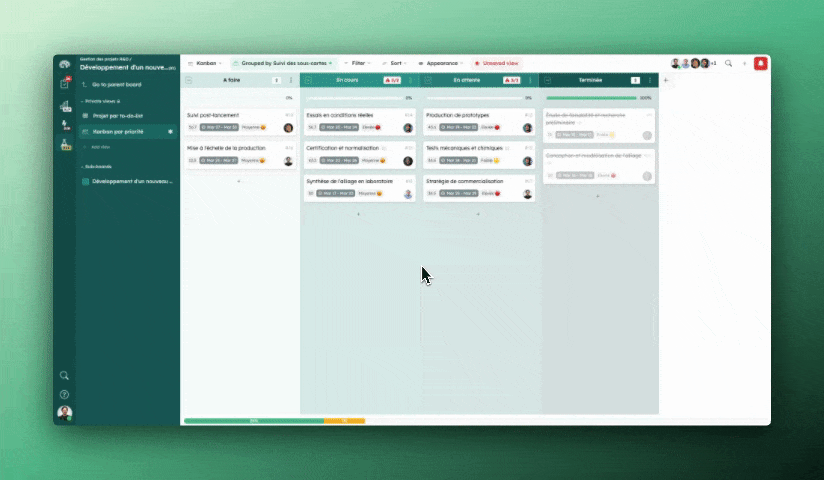 Setting up of a Scrumban board is easy in Kantree.
Setting up of a Scrumban board is easy in Kantree.
4) Workflow: Process Optimization
What is a workflow?
A workflow is a set of predefined steps to follow for completing a task or better managing project oversight. It’s a flexible method that can be adapted to many processes, regardless of industry.
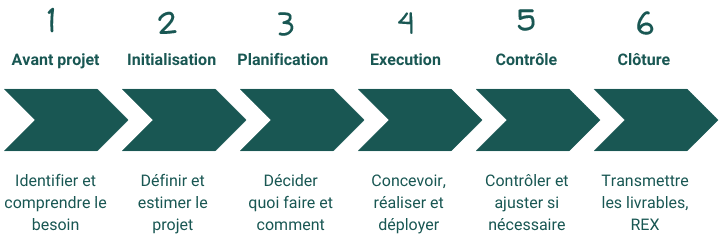 Workflow methodology.
Workflow methodology.
Advantages of workflows:
- Process clarity: Workflows allow for the visualization of each step and automation of transitions.
- Efficiency: Identifying critical steps makes it easier to optimize task processing times.
Disadvantages of workflows:
- Potential rigidity: A poorly designed workflow can slow processes instead of speeding them up. It’s important to test your workflow first.
- Initial complexity: It can be challenging to model a complex process correctly from the start.
Common use case:
Workflows are used across industries, from financial services to manufacturing, for managing recurring processes like document validation or inventory management.
How does workflow function in Kantree?
Kantree simplifies the creation of custom workflows since the tool is highly flexible and modular, which is our strength. You can automate complex processes while ensuring task tracking at each stage.
To give you an idea of a workflow we set up, take a look at an HR process workflow. Click the image to start editing it 👇
5) Waterfall: The Traditional Method
What is Waterfall?
Waterfall, or the cascade method, is a sequential model where each project phase must be completed before the next one begins. Each step is planned in advance, allowing for strict adherence to a plan from start to finish.
Advantages of the waterfall methodology:
- Clear objectives: Each phase is clearly defined and documented.
- Control over timelines and costs: Ideal for projects with fixed deadlines and budgets.
Disadvantages of Waterfall:
- Rigidity: Once a phase is completed, it’s difficult to go back and correct mistakes.
- Lack of flexibility: If changes are needed, they can significantly delay the project.
Common use case:
The Waterfall method is particularly effective for projects with stable and well-defined requirements from the start, such as construction projects or software development for critical systems.
How does Waterfall work in Kantree?
With Kantree, you can plan and manage each project phase. It’s easy to create a Gantt chart to strictly track deadlines and deliverables. To achieve this, use:
- Forms to collect requirements and email cards to directly populate your workspace.
- The Eisenhower Matrix view (under development) to prioritize.
- The Gantt view to simulate a forecast plan.
- The Dependency field to create dependencies between cards.
- Automations to automatically move cards to the next step.
- The Gantt view to visualize deadlines, dependencies, and the critical path.
- Sub-cards as checklists.
- Automations to alert you of any non-compliant elements: sending an email, posting a comment, moving to a group, or automatically assigning a person responsible.
- The Dashboard views to monitor progress.
- Portfolio space to visualize cross-workspace progress, providing a macro view.
We have created a waterfall project template. Click the image to start editing it 👇
6) Hybrid Method: Combining Agile and Waterfall
What is the hybrid method?
The hybrid method combines the benefits of Agile (adaptability) and Waterfall (strict planning) by splitting projects into phases, some managed in Agile mode, others in Waterfall mode.
Advantages of the hybrid method:
- Flexibility and rigor: Combines Agile flexibility with Waterfall control elements.
- Adaptation for complex projects: Ideal for complex projects where some parts need fast delivery while others require a more formal approach.
Disadvantages of the hybrid method:
- Implementation complexity: Combining two methodologies requires precise coordination and rigorous management of transitions between phases.
- Risk of confusion: If teams are not well-versed in both methods, misunderstandings and inefficiencies may arise.
- Increased communication: Constant communication between stakeholders is required to ensure expectations are clear and the methodology is respected.
Common use case:
The hybrid method is particularly suited for projects that combine complex technical development, where Agile is needed for quick adjustments, and regulatory or certification phases, which require a more formalized Waterfall process. For example, in aerospace, developing embedded software may follow Agile cycles to adjust functionalities, while certification and compliance testing follow a rigid Waterfall process to ensure standards compliance.
How does the hybrid method work in Kantree?
Managing both planning and task allocation simultaneously is feasible.
We’ve prepared a hybrid project methodology template for you. Click the image to start editing it 👇
Conclusion
Each method, whether Scrum, Kanban, Waterfall or hybrid approaches, has its advantages and disadvantages. Kantree stands out by offering a flexible solution that allows you to combine these methods with ease. Thanks to its advanced and modular features, Kantree becomes the ideal tool for teams seeking to optimize their workflows while adapting to the specificities of each project.
To go further
3 possibilities offered to you if you have an interest with this subject :
-
1
Try Kantree here, it is free and you don’t need any credit card
-
2
If you want to learn more about how Kantree can adapt to your challenges, make an appointment with an expert on your use case.
-
3
Are you willing to join +1500 professionals receiving our advices and news on digitalization, collaboration, productivity? Register to our newsletter here.
If you enjoyed this article, share it easily down here.
